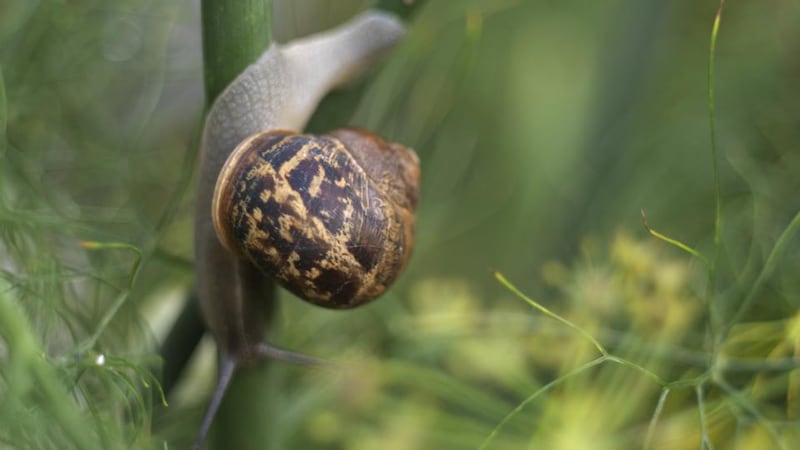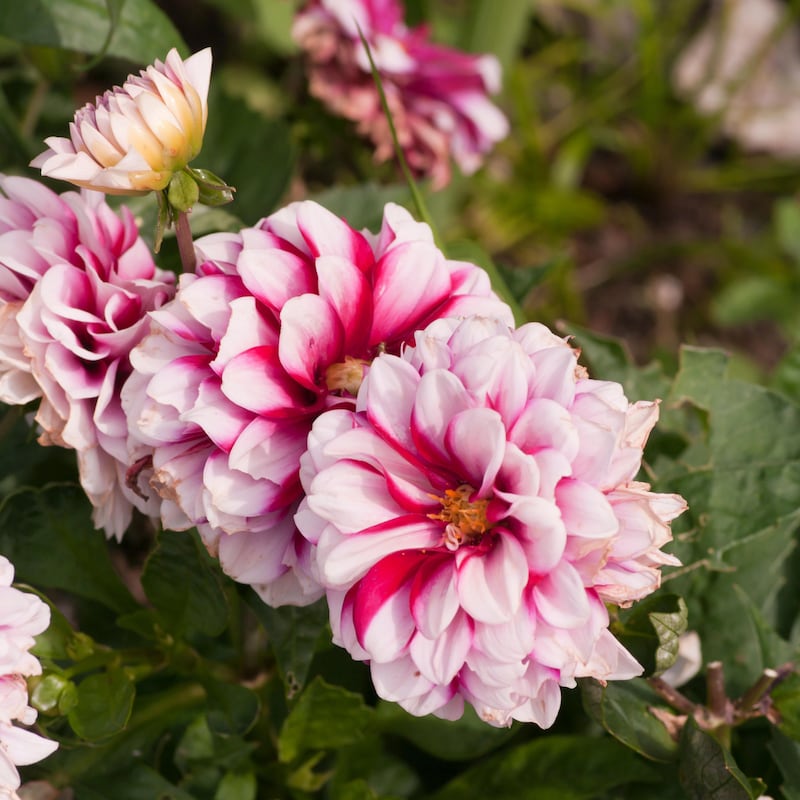I hate slugs. There, I’ve said it. Yes, yes, I know, it’s shockingly politically incorrect of me, especially as a garden writer who has long preached the importance of doing what we can to support biodiversity. And yes, I know, there are many species that are supposedly quite benign or even beneficial in terms of their role in our gardens and allotments – slugs that reputedly don’t eat our precious young seedlings and plants unless “needs must”, and which are the great cleaner-uppers of the natural world, hoovering up the decaying vegetation and debris that would otherwise accumulate. I know, too, that slugs are an important food for many other creatures, from beetles and shrews to frogs and birds. There’s even a rare species – the Kerry slug, Geomaculus maculosus – that’s strictly protected by law. But still, I find them loathsome.
I hate, for example, that they can obliterate a tray of much-loved baby seedlings overnight, or decimate a carefully cosseted bed of young transplants that have taken long months of care to bring to independent life. I despise their stealthy, undercover manoeuvrings, their ability to cunningly conceal themselves in tiny, dark, damp spaces within plant pots or under seed trays or in the ground until the opportunity presents itself for them to emerge under cover of darkness and then guzzle away to their heart’s content. I’m forever revolted by their cunning habit of laying tiny clusters of silver-grey eggs within the soil, right next to emerging tender shoots of vulnerable species.
Likewise, I detest the damp, gluey, mucous touch of them (to this day it makes me squeal), the sight of them emerging on cool, rainy evenings at dusk to feed and mate, and the fact that they can be potential hosts to various kinds of lungworm that threaten human and pet health. I even loathe the words used to describe their various body parts. Pneumostome. Foot fringe. Sole. Tubercle. Yuck.
[ The joys of raising plants from seedOpens in new window ]
More charitable gardeners might be intrigued by the fact that as hermaphrodites, slugs can fertilise themselves, or that they’re genetically closely related to octopuses (or should that be octopi) – but not me. Likewise, the fact that Ireland is home to more than 30 distinct species is a cause for private gloom rather than pride.
Sometimes, in my darkest moments, I find myself wondering roughly how many of them share this damp little island with us. Billions? Trillions? Whatever the number, it’s not surprising that preventing them and snails (quite irrationally, I don’t hate these anything like as much) from leaving a trail of destruction is a serious challenge for most Irish gardeners at this time of year.
I’ve yet to try crushed oyster shells, small packets of which can be seen for sale for eye-watering prices in garden centres
What to do? Kinder-natured gardeners have been known to politely request slugs and snails to leave their more precious plants alone, apparently with some success. This hasn’t worked for me so far, but then again, perhaps they sense that my attempts at civility are entirely insincere. Others have had success with spreading physical barriers such as crushed eggshells and coffee grounds around the bases of vulnerable plants, but I’d have to eat an awful lot of eggs and drink a heart-jolting quantity of coffee to produce enough for my needs.
Over the years I’ve also tried coarse grit around the base of plants (not hugely effective), wool pellets (expensive and pretty useless), copper rings (not very practical on a large scale) and beer or yeast traps (effective but relatively costly, plus there’s the added yuck factor of having to regularly empty them).

Organically acceptable kinds of slug pellets (well-known brands include Sluggo) containing ferrous phosphate have proven reasonably effective, but dissolve very quickly in our rainy climate, and repeated use isn’t great for long-term soil health. I’ve yet to try crushed oyster shells, small packets of which can be seen for sale for eye-watering prices in garden centres, but I can’t imagine they’d make a cost-effective solution. Also new to me is the option of an environmentally acceptable spray such as Grazers Slug & Snail Repellent, where the active ingredient is calcium chloride. Apparently slugs and snails are so disgusted by the taste of it that they won’t eat treated plants, but given it’s not waterproof, it doesn’t seem the most practical or cost-effective solution. A homemade garlic spray? Supposedly this has a similar deterrent effect, but I don’t think I could face the pong and faff of making it.
I’ve also resorted to heading out at night to kill any that I find chomping on vulnerable plants, using a mobile phone as a torch
On the other hand, I can heartily recommend homemade nettle feed, despite the fact that it’s even more foul-smelling. Made from the plant’s young leaves left steeping in a lidded container of water for several weeks, it’s impressively effective in protecting established but vulnerable plants such as dahlias as well as helping them to recover against slug and snail attack. Just make sure to dilute it down to the colour of weak tea, and then apply it as a foliar feed every fortnight in late spring-early summer. The downside is that you’ll have to endure the foul stench of it.

Of course, this year’s cool wet spring has further aggravated the problem of slug and snail damage at this tricky pressure-point in the garden calendar. So, more than ever, I’m grateful for the fact that I rarely direct sow, preferring where possible to first raise seedlings in trays to a size where they’re much better able to survive attack.
[ ‘I have a new garden . . . . or the beginnings of one’Opens in new window ]
But after repeatedly losing lines of young transplants to severe slug and snail damage in recent weeks, I’ve also resorted to heading out at night to kill any that I find chomping on vulnerable plants, using a mobile phone as a torch and a sharp scissors as my weapon of choice. It’s quite effective and – given the trail of destruction that they leave – also shamefully satisfying, in a Lady Macbeth-ish kind of way.

Also on my list is an organically acceptable biological control in the shape of nematodes (a kind of naturally occurring, microscopic worm called Phasmarhabditis hermaphrodita that feeds on slugs) applied as a liquid soil drench. Called Nemaslug (see mrmiddleton.com), this must be ordered in advance and then applied on a warm, damp day (late in the evening) in order for the parasitic nematodes to successfully establish themselves. It’s relatively slow to act and needs to be reapplied after a couple of months but is very effective against many kinds of destructive, small- to medium-sized slug species.
Last but not least, I’m also going to try the Laois-based organic gardener Tanguy de Toulgoet’s fascinating tip, which is to sow radish seed for a cheap, fast-germinating sacrificial crop of seedlings that greedy molluscs can feast on, rather than chomping my precious dahlias. This means, of course, that I’ll be feeding the enemy, but who knows? Perhaps distraction rather than destruction could turn out to be the most effective control method of all.
This week in the garden
Start hardening off young seedlings and transplants grown under cover in preparation for planting them outside into their permanent growing positions, by gradually accustoming them to cooler, more variable growing conditions outdoors.
With minimal risk of a late frost forecast for the country in the coming weeks, it’s now okay to start planting out half-hardy bedding plants and tender perennials as long as the weather isn’t cool and windy. To help these young plants to quickly establish, it’s a good idea to soak their rootballs in a weak solution of liquid seaweed before planting. It’s also a good idea to take extra careful precautions against slugs and snails until they grow large enough to fight off attack (see above). Covering baby vegetable transplants with a light layer of garden fleece will also boost growth.
Dates for your diary
Today, Saturday, May 20th, and tomorrow, Sunday, May 21st, (11am-4pm), Bellefield House, Shinrone, Co Offaly, RHSI Bellefield garden opens to the public with guided tours by head gardener Paul Smyth at noon and 2pm, see rhsi.ie
Tomorrow, Sunday, May 21st (9.30-5pm), Irish Specialist Nursery Association Plant Fair at Airfield Estate, Dundrum, Co Dublin, with a range of stalls by many of the country’s leading specialist nurseries, see airfield.ie
Monday May 22nd – Saturday May 27th, the annual RHS Chelsea Flower Show takes place in the grounds of London’s Royal Hospital Chelsea, and includes an exhibit in the Great Pavilion by previous gold medal winner and nurseryman Billy Alexander of Kelly Bay Gardens in Co Kerry, as well as the show garden Cavernoma On My Mind, created by Cork garden designer Ann Hamilton in partnership with Finnish garden designer Taina Suonio, see rhs.org.uk
















